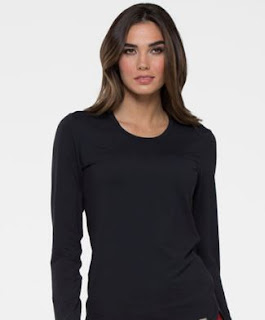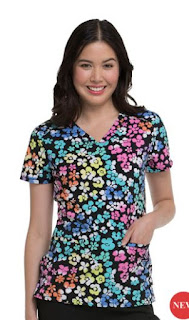Nurse Innovators are Agents of Change
By Jordie Papa
 |
| Image courtesy of Picpedia |
Anyone who has spent even a little time in nursing
realizes that modern medicine is all about innovation. Medical technologies and procedures that were
once considered science fiction are now commonplace in US hospitals. More innovations occur every year in
biotechnology than practically any other industry today. So, it should come as no surprise that there
exists a branch of nursing dedicated to exploring and exploiting medical
innovation.
The
Army of Arnie’s
Registered Nurse Innovators, influencers and
entrepreneurs, otherwise known as RNIIE (pronounced Arnie), dedicate their
professional lives to benefit nurses everywhere by exploring cutting edge
medical technologies, then sharing this knowledge with nurses of all stripes. More than just working nurses, Arnies go
above and beyond the call of duty to help raise the bar. Their opinions are highly sought and their
ability to learn adapt and teach some of the latest medical breakthroughs is what
sets them apart from the herd. Some are
so respected that they are asked to help develop new treatment protocols.
Tara
Barr Raises the Bar on Stroke Treatment
 |
| Image courtesy health.mil |
A stroke occurs every 40-seconds in this country. The difference between recovery and
complications in many cases has to do with correctly diagnosing the stroke in
the first place. Many patients initial
symptoms are all too easily misdiagnosed as hypertension or migraine
headaches. For every minute that passes
after a stroke takes place, 2 million neurons die. Any delay in detecting and treating a stroke means
the patient can suffer a deficit to speech, memory and movement. Wait too long and death is usually the
result. Having been an ICU nurse, Barr
was all too familiar with head injuries which may or may not have been
strokes. Usually all she could do was
tell patients and family members to wait since it took time to determine the
answers. This was time that many stroke
victims did not have. After going back
to school to get her PhD, she became a post-doctoral fellow who led a traumatic
injury study on active duty service members.
This led her to becoming the Chief Science Officer at Valtari Bio where
she was developed two new diagnostic tools that quickly help determine the
onset of stroke as well as determining the type of stroke a patient is having.
Watching
Out for the Watchers
 |
| Image courtesy wikimedia |
Disasters and nurses go together like a hand in a
glove. That’s because when a disaster is
declared, nurses are in great demand.
The problem is that once the disaster is over, it’s often these same
nurses who are the most traumatized by the event. In 2017, there were more than 120 federal
disasters declared in this country alone.
During several of them, including the aftermath of Hurricane Harvey that
devastated Texas, nurses from across the country were called in to help. Hundreds of nurses responded and many were
affected by what they saw to the point were some were affected by
post-traumatic stress disorder. While
officials were quick to call for help, until recently, nurses who themselves
needed help after volunteering for disaster relief, had nowhere to go. In 2018, Danita Alfred RN PhD, a nursing
professor at the University of Texas, listened to some of the volunteers
stories and decided to do something about it.
Securing a grant from the Johnson & Johnson Foundation, she and
other nurses with disaster relief experience created a collection of free
online resources designed to help prepare nurses for the realities of disaster
relief and its aftermath. Called Care
for the Caregiver, which contains a wealth of blogs and videos that deal with
every aspect of disaster relief as it relates to nurses.
https://www.texasnurses.org/page/c4c
Nurse
MacGyver to the Rescue
Roxana Reyna, RN has healing in her DNA. This Texan comes from a family of healers,
including, including her great-grandmother who was known to concoct herbal
remedies to take to ranchers to treat wounds and ailments long before the NIH
was ever formed. For more than two
decades, Reyna has helped develop pediatric care solutions at Driscoll
Children’s Hospital in Corpus Christi.
At least one of the treatments she helped pioneer would have made her
great grandma proud. Children with
omphalocele are born with some of their abdominal organs outside the body. Since this condition sometimes requires that
the patient wait up to a year for corrective surgery, the translucent sac that
keeps the exposed organs from becoming infected needs to be protected. In 2008, Reyna came up with a solution that
combined different types of surgical dressings to help protect the fragile
membrane. Her innovation was so
successful that many of the infants born with the defect are allowed to go home
in less than 2-weeks, instead of being forced to remain hospitalized for
months. So impressive was her
achievement, that she was invited to the White House in 2014 to take part in
the Maker-Faire where she had the opportunity to rub elbows with other
innovators. You can read the article about her experience there by clicking the
link below.
Do
you know any nurse innovators?
When it comes to keeping other nurses up to date and
on the beam when it comes to modern medicine, who is better qualified than
nurse influencers, innovators and entrepreneurs? It’s though the actions of RNIIE’s that the
practice of nursing is destined to become much more important and necessary to
the advancement of medical care in the 21st Century.
Jordie
Papa is owner of Uniform Destination with four locations in North Florida.


When it comes to the medical profession, nurses definitely don't get the credit they are due. This blog shows that nurses are just as smart as doctors.
ReplyDeleteWow, very interesting article. I did not know how innovative nurses could be.
ReplyDelete